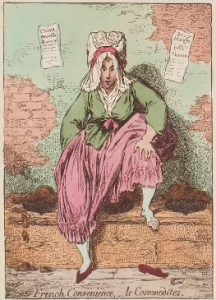When parishes agreed to meet the costs of medicines for the parish poor, they might require medical practitioners to submit an itemised bill for the raw materials, procedures and travel involved in delivering treatment. Many of the items were commonly known to contemporaries, but are less familiar to us: therefore when writers abbreviated entries for repeated supplies, they stored up a problem for twenty-first century readers. It is notoriously difficult (and perhaps unwise) to try to decipher the abbreviated Latin prescriptions of physicians. It is a little easier to understand the medical interventions involved when the original language was English, and/or the substances remain part of formal or informal treatments.

Dame Trill from East Hoathly had a problem we can recognise – she was constipated. We do not know the background to her story; she may have suffered a dietary deficiency of roughage or, if struggling with piles, she might have found relief in additional stool softener. Whatever the cause, the problem was stubborn. The parish bought senna and prunes for Dame Trill repeatedly 1770-4, usually at a cost of six and a half pence per treatment. Raisins were sometimes offered as an alternative to prunes.
Other treatments issued to the sick poor were more general. The purpose of diuretic balsam is made clear in the name, in that it was designed to remedy the retention of urine, but the specific diagnosis is less easy to divine. Medicines for the poor at this date still relied on humoural understandings of the body for their rationale. Humoural medicine construed ill health as the imbalance of humours or fluids within the body. The four humours of blood, phlegm, black bile and yellow bile had a unique blend or balance for each individual, and the restoration of health demanded the removal of any humour that was overly prevalent. For this reason vomits, purges, diuretics and bleeding were among the most frequently used medicines throughout the eighteenth century.
In addition to generic remedies there was a willingness by parishes to pay for the equivalent of brand-name medicines, known at the time as patent medicines. Widow Cane of East Hoathly was given Hooper’s Pills in 1773. The patent for this medicine was first issued in 1743 and was one of the most successful and long-lasting products of its type, being sold well into the twentieth century in England and elsewhere. It pledged to tackle female ‘irregularities’ and so was assumed by some customers to be a viable solution to an unwanted pregnancy. It is important to say, though, that we don’t automatically suppose that this was the purpose of the parish in buying the pills for Widow Cane! This medicine also offered to treat stomach problems, hysteria, and menstrual concerns: perhaps Widow Cane was menopausal?
Lists of medicines and treatments for the parish poor have presented a problem to historians thus far: how are we to use them, if we cannot work out the ingredients of items listed simply as pills, powders or mixtures, and if the recipients are not always obvious? This is one of the problems this project is hoping to address. Do get in touch with the project team if you have any ideas about how we might use these intriguing vouchers to ask historical questions.